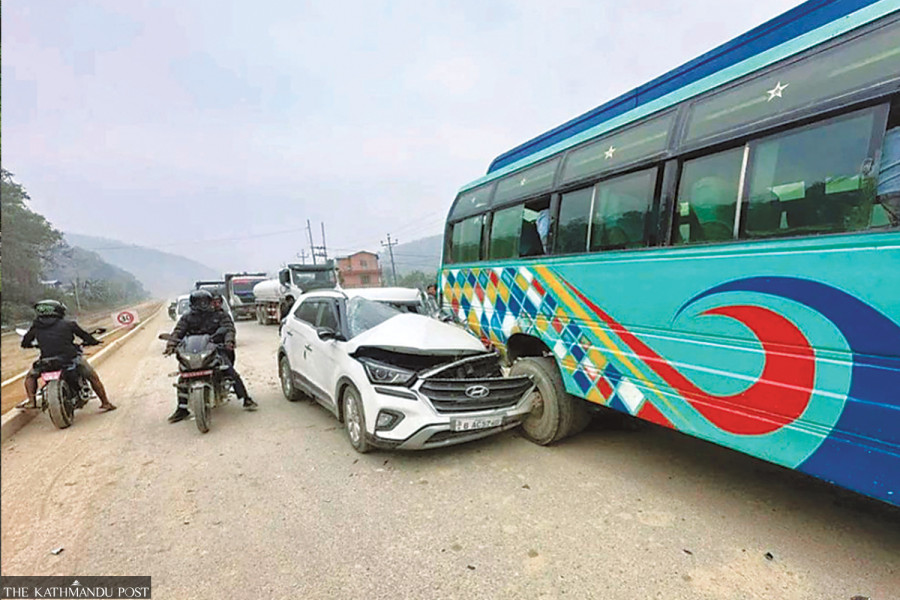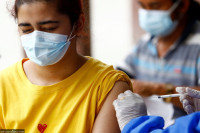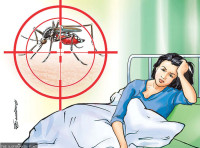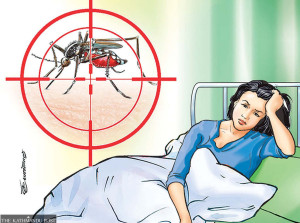Health
Long-haul drivers to get stress management classes
Officials at health and population ministry hope the training will help in lessening ongoing road traffic incidents, which has emerged as the major cause of death in the country.
Arjun Poudel
In a bid to lessen road accidents, the Ministry of Health and Population plans to impart stress management lessons to drivers, especially those operating on long routes.
The stress management classes will help drivers fight stress and keep calm while driving, officials hope.
“We have sought a budget for stress management classes for drivers working on long routes,” said Dr Pomati Thapa, chief of the Mental Health Section at the Epidemiology and Disease Control Division. “We hope they will be effective in lessening road traffic accidents in the country.”
Road accidents have emerged as a major cause of death in Nepal in recent years. According to a report of the Nepal Demographic and Health Survey-2022, on average, 14 deaths occur due to accident injuries per 100,000 people in Nepal. More males (11 deaths per 100,000) than females (three deaths per 100,000) die due to injuries inflicted during road accidents, the report states.
The National Planning Commission estimated the road accident death rate in Nepal to be 15.9 per 100,000 people. Overall, there were 14,736 injuries and 2,789 deaths related to road crashes in the fiscal year 2018–2019. A report by the Nepal Police showed that a total of 2,883 individuals died and 7,282 others sustained severe injuries in road accidents during the fiscal year 2021–2022.
However, the World Health Organisation’s 5th Global Road Safety Status Report, published in December 2023, estimated 8,479 road traffic deaths in 2021. The report shows a 71–77 percent increase in Nepal’s absolute number of deaths from road traffic accidents in 2013.
The NDHS report shows that a large number of those involved in traffic accidents have non-fatal injuries. Overall, 1,088 individuals per 100,000 population (301 per 100,000 females and 787 per 100,000 males) sustain nonfatal injuries due to road accidents or crashes. Nearly two thirds (63 percent) of those who were injured in road accidents in the last 12 months had a cut or an open wound, while 28 percent had broken bones, 23 percent percent had internal injuries, and 13 percent sustained head injuries.
One fifth (21 percent) of the severely injured individuals lost limb function, while five percent suffered brain damage.
There were 1,102 deaths and injuries per 100,000 people due to road accidents and injuries in the 12 months preceding the survey.
Experts say many drivers of public transport work from morning to evening. Some even have to drive up to 15–16 hours.
“As humans, drivers get stressed from work load, they also have family problems, and lack rest and sleep,” said Dr Bashudev Karki, a consultant psychiatric at Nepal Mental Hospital. “This type of programme [stress management training] will help drivers remain calm and not lose patience while on the wheels. We should not forget that several lives could be at risk when drivers lose patience.”
Some drivers opt for substance use–alcohol and drugs—to cope the stress. Some even get addicted. The Metropolitan Traffic Police Division said that traffic police in Kathmandu have regularly been carrying out substance tests on drivers.
“We carry out substance tests on drivers on a regular basis,” said Posh Raj Pokhrel, a deputy inspector general of Nepal Police. “We will take legal actions on those found using substances while driving.”
Pokhrel said that drivers too get stressed due to the nature of job, workload and other personal issues and that stress management training will help lessen the number of road accidents.
As part of a global commitment, Nepal has adopted the SDG Target 3.6 on road safety, under which the country aimed to halve the number of fatalities and injuries by 2030.
Worldwide, road traffic injuries are the eighth leading cause of death among people of all ages and the leading cause of death among children and young adults in the age group 5–29 years. The burden of traffic deaths is disproportionately high among the low- and middle-income countries with relation to the size of their populations and the number of motor vehicles in circulation, according to the World Health Organisation.
Injuries sustained in road traffic accidents cause considerable economic losses to individuals, their families, and nations. Nations also suffer social losses as a result of accidents, according to the UN health body.




 7.12°C Kathmandu
7.12°C Kathmandu














